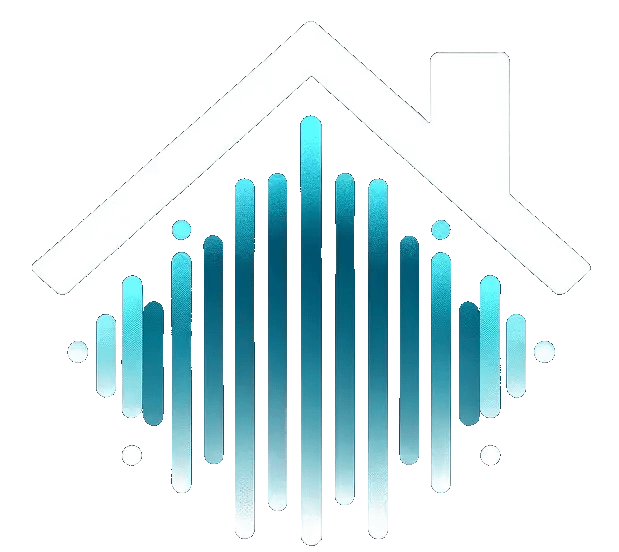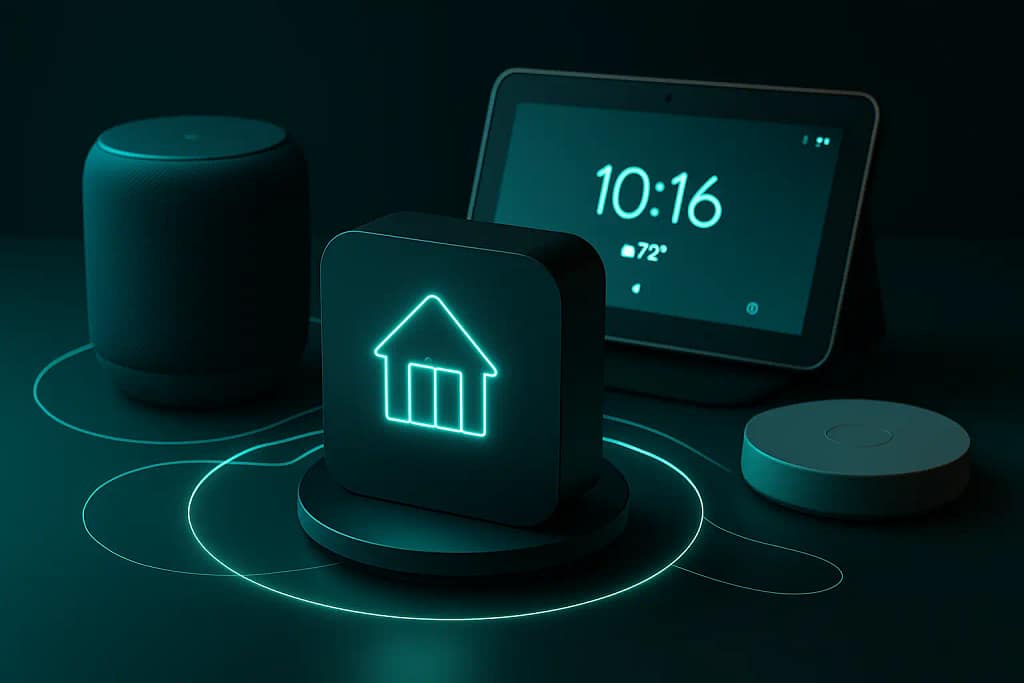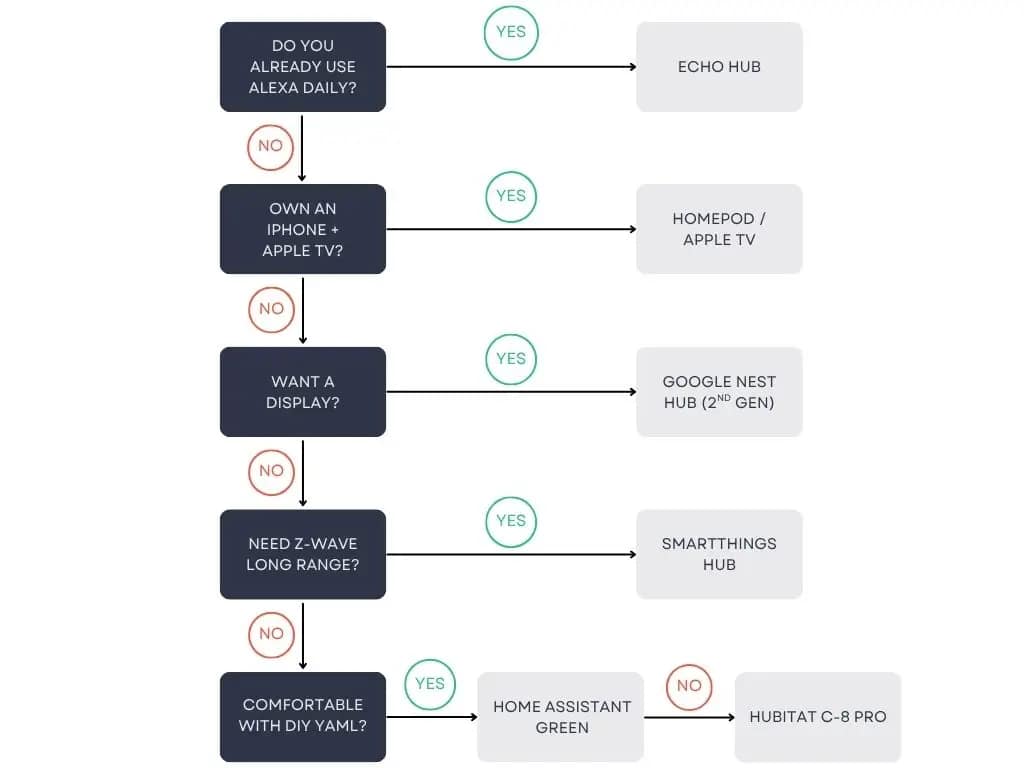Looking for the best smart home hubs and ecosystems in 2025? You're in the right place! This guide explains the top choices from Amazon, Google, Apple, Samsung, and more. Whether you're just starting out or already have some smart devices, we'll help you pick the perfect hub for your home.
Why Your First "Hub" Decision Still Matters in 2025
Think of Matter as the universal language for your smart home gadgets. It just got a major update to version 1.3, which lets it manage new things like your energy and water usage, and even your car charger. But there's a catch: to get these new perks, your smart hub needs to be fluent in all the right wireless languages (like Wi-Fi 6, Zigbee, Z-Wave, and Thread) and keep its software up to date. If you choose the wrong hub, your devices could get stuck in the past, missing out on crucial updates and unable to work together in cool automated scenes. On the bright side, today's hubs are more affordable, simple to mount on a wall, and rarely require a monthly subscription. Here's a look at your options.
TL;DR Recap
- If you're heavily invested in one brand, stick with its hub — you'll ride the fastest Matter updates.
- If you're starting fresh, the <$200 Echo Hub or Nest Hub are safe bets and double as Thread border routers.
- Power users should look to Hubitat or Home Assistant for 100 % local rules and granular device control.
- Matter ≠ magic (yet). Give it another year for cameras and vacuums — but it already solves multi-brand basics.
2025 Hub Comparison at a Glance
| Hub / Ecosystem | On-Board Radios (+ Protocols) | Voice Assistant | Approx. Price (USD) | Stand-Out Features |
|---|---|---|---|---|
| Amazon Echo Hub | Wi-Fi 6 Zigbee 3.0 Thread 1.3 Matter Coord. | Alexa | $180 (often $145 on sale) | 8" touch panel; PoE or USB-C power; wall or desk; Ring mode widgets |
| Google Nest Hub (2nd gen) | Wi-Fi 5 Thread 1.3 BLE Matter Coord. | Google Assistant | $99 (frequent $69 promos) | Sleep-tracking radar; border-router; no camera (privacy-friendly) |
| Apple HomePod (2nd gen) / mini | Wi-Fi 6 Thread 1.3 Ultra-Wideband Matter Coord. | Siri | $299 / $99 | Spatial audio; end-to-end encrypted Home Kit Secure Video |
| Aeotec SmartThings Hub | Z-Wave LR Zigbee 3.0 Thread 1.3 (beta) Wi-Fi 5 | Bixby / Assistant / Alexa bridge | $134 | Powerful rule engine in SmartThings "Routines"; Samsung TVs as satellites |
| Hubitat Elevation C-8 Pro | Z-Wave LR Zigbee 3.0 Ethernet/Wi-Fi (pairs Thread devices via external router) | Works with Alexa & Assistant (via skill) | $199 | 100 % local automation; granular Rule Machine; power-user dashboards |
| Home Assistant Green* | Ethernet (add Zigbee / Thread via USB sticks) | Own UI + optional voice add-on | $149 | Open-source; 2500+ integrations; backups to any NAS |
*Needs a Matter/Thread dongle (or any Thread border router on your network) to pair Thread devices.
Amazon Alexa + Echo Hub & Echo Family
Best for … households already knee-deep in Ring cams, Fire TV sticks, or Echo speakers.
Fast facts:
- 8" 1280 × 800 capacitive screen with adaptive widgets.
- Acts as a combined Matter controller, Thread border router, Zigbee coordinator, and Alexa speaker.
- Runs Amazon's new
Map View—a floor-plan UI that lets you drag-and-drop automations.
Drawbacks: The speakers are just okay, so you won't get the high-end Dolby Atmos sound that the pricier Echo Show 10 offers. Another downside is that developers can't create their own custom widgets for the screen, which means you're limited to the layouts Amazon provides. Finally, the special kit that lets you power the Hub through its network cable (called Power over Ethernet, or PoE) was promised for early 2025, but it's still not available to buy as of late June.
Who is it for? The Echo Hub is the perfect fit for a household that already uses a lot of Ring security cameras and devices. It's designed for someone who wants a central, wall-mounted "command center" to control their entire smart home without having to spend a lot of money on a high-end, premium system (like the expensive ones from Brilliant).
Google Home + Nest Hub (2nd gen)
Best for … Google Workspace or Pixel families who already use YouTube Music, Photos, or a Nest thermostat.
- Compact 7" screen, fabric base, ultrasound "approach" detection.
- Thread 1.3 border router shipped in the December 2024 firmware; now pairs Eve, Nanoleaf, and Aqara sensors natively.
- "Look and Talk" removes the "Hey Google" hot-word when you're 1–3 ft away.
However, there are a couple of downsides. The biggest one is that the Hub depends on Google's internet servers (the "cloud") to run your automations. This means if your internet service goes out, your routines will stop working until you're back online. Additionally, there's a known bug with its Thread connection, which is the network it uses for many modern smart devices. If you have another gadget on your network that also manages Thread signals (like an Eero Wi-Fi 7 router), the Hub can sometimes get confused and cause hiccups with your devices. Google has promised to fix this bug before the next version of Thread is released in late 2025.
Apple Home + HomePod (2nd gen & mini)
Best for … privacy-minded iPhone users who want hands-free intercom, airtight end-to-end encryption, and the Apple TV + HomePod theater handshake.
- Full support for Matter 1.3 device types and adaptive lighting scenes.
- Ultra-Wideband chip enables "tap-to-handoff" music, plus precise
Find Myautomations. - New "Guest" feature (iOS 18) lets friends control selected devices without unlocking everything.
Samsung SmartThings (Aeotec Hub + Satellites)
Best for … gadget collectors juggling Z-Wave sensors, Zigbee bulbs, and Samsung appliances.
- Z-Wave 800 LR boosts range ≈1 mi line-of-sight.
- SmartThings TV & fridge apps act as secondary hubs, letting you run scenes from the couch or kitchen island.
- Rule engine now supports
if (condition) then (delay) dologic and Webhooks.
Power-User Route: Hubitat C-8 Pro or Home Assistant Green
Best for … tinkerers who value local-only automations, custom dashboards, raw Zigbee/Z-Wave stack access, and zero vendor lock-in.
Hubitat C-8 Pro comes packed with Zigbee 3.0 and Z-Wave Long Range radios, plus software that lets it control Matter devices and gives you a powerful, easy-to-use Rule Machine for automations. One thing it's missing, though, is a built-in Thread radio. That means if you want to use Thread devices, you'll need to connect them through another hub—like an Echo Hub, Apple TV, or Nest Hub—and then link those devices to Hubitat using Matter.
Real-world logs show <150 ms latency on indoor motion->light triggers and full backups to a USB flash drive.
Drawbacks: steeper learning curve and "quirks mode" handset drivers community-maintained.
Ecosystem Lock-In vs Matter's 2025 Promise
Matter can now connect to even more things in your home, like washing machines, electric vehicle chargers, and devices that help you track your energy use, thanks to the big 1.3 update in May 2025. But Matter still has some problems that come from the systems it runs on—like Thread connections that aren't always stable and multi-admin features that aren't fully developed yet. Experts in the industry are calling 2025 the "fix year," where the main goal is to make everything more reliable before adding even more types of devices.
Here's the short version: Matter already makes it much easier to mix and match brands for simple devices like switches, light bulbs, plugs, and sensors. But for more complicated gadgets—like cameras and robot vacuums—you'll still need to use the apps and cloud services from their original brands, at least for now. If you're picking a hub, make sure it already supports all the wireless types you need, and that it's powerful enough (and from a brand that keeps updating) to handle the next big Matter and Thread updates coming in the next year or two.
Quick Pick Flowchart
Use this flowchart to quickly determine which smart home hub is right for your needs
What's Coming Next: A Look at 2026
- Thread 1.4 is taking over: Starting January 1, 2026, Thread 1.4 will be the main standard for connecting smart home devices. This means that big brands like Apple, Google, Amazon, and Samsung will finally be able to share one strong, reliable network in your home. For example, the newest version of Apple TV software (tvOS 26 beta) already supports this update.
- Matter 1.4 and 1.5 are on the way: Between late 2025 and mid-2026, new versions of Matter will make it possible to connect even more types of devices, like security cameras, robot vacuums, and advanced safety sensors that can detect things like water leaks.
- Smarter voice assistants: Voice assistants like Apple's Siri and Amazon's Alexa are getting big upgrades. Soon, they'll be able to understand and respond to you even if your internet is down, because more of their "brains" will be built right into your hub or speaker.
- Better energy tracking for everyone: New rules in the U.S. and Europe are pushing companies to show you exactly how much energy each device in your home uses. Matter 1.3 already supports this, so you'll start seeing more apps and dashboards that help you save money by running things like your dryer when electricity is cheapest or when your solar panels are making extra power.
FAQ
What is the best smart home hub in 2025??
The Amazon Echo Hub ($180) offers the best combination of features for most users, with support for Thread, Zigbee, and Matter protocols, plus an 8-inch touchscreen and wall-mounting capability. For budget-conscious users, the Google Nest Hub 2nd gen ($99) provides excellent Thread support and voice control. Power users should consider Hubitat C-8 Pro ($229) for local-only automations or Home Assistant Green ($119) for maximum customization.
Does Matter make hubs obsolete?
No, Matter doesn't eliminate the need for hubs. While Matter reduces brand lock-in and enables cross-platform compatibility, you still need a hub or border router to coordinate devices, run local automations, and manage your smart home ecosystem. Matter 1.3 (released May 2025) adds support for energy management and EV chargers, but complex devices like cameras and vacuums still require their native apps.
Which smart home ecosystem has the best privacy?
Apple HomeKit offers the strongest privacy with end-to-end encryption and local processing. Home Assistant provides complete local control with no cloud dependencies. Google Nest Hub has no camera (privacy-friendly) but relies on cloud processing. Amazon Echo Hub processes some routines locally but still connects to Amazon's cloud services. For maximum privacy, choose Home Assistant or Apple HomeKit.
Do I need multiple hubs for different device types?
Not necessarily. Modern hubs like the Echo Hub and SmartThings Hub support multiple protocols (Zigbee, Z-Wave, Thread, Matter) in a single device. However, you might need additional hubs if you have devices that only work with specific protocols not supported by your main hub, or if you need extended range for outdoor devices using Z-Wave Long Range.
What's the difference between Thread and Zigbee?
Thread is a newer, IP-based mesh network that's part of the Matter standard, offering better reliability and easier setup. Zigbee is an older but mature protocol with extensive device support. Thread devices can communicate directly with your Wi-Fi router, while Zigbee requires a coordinator. Many modern hubs support both, so you can use whichever protocol your devices require.
How important is local processing for smart home automation?
Local processing is crucial for reliability and speed. Hubs like Hubitat and Home Assistant run automations locally, ensuring they work even without internet. Cloud-dependent systems like Google Home may have delays or fail during outages. For critical automations (security, lighting, climate control), local processing provides faster response times and better reliability.
*As an Amazon Associate, EchoTekk earns from qualifying purchases.▲ Back to top | Read Smart Home Planning Guide (2025)| More Hubs & Ecosystems




